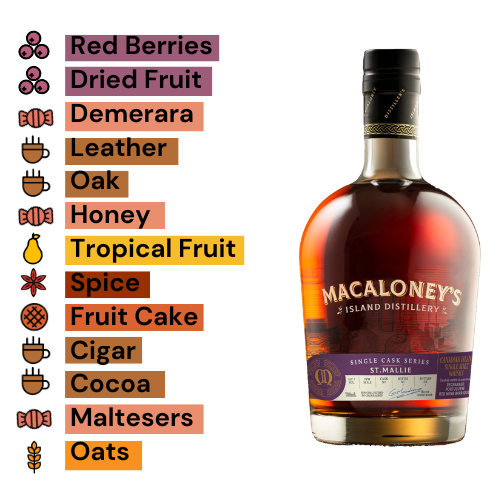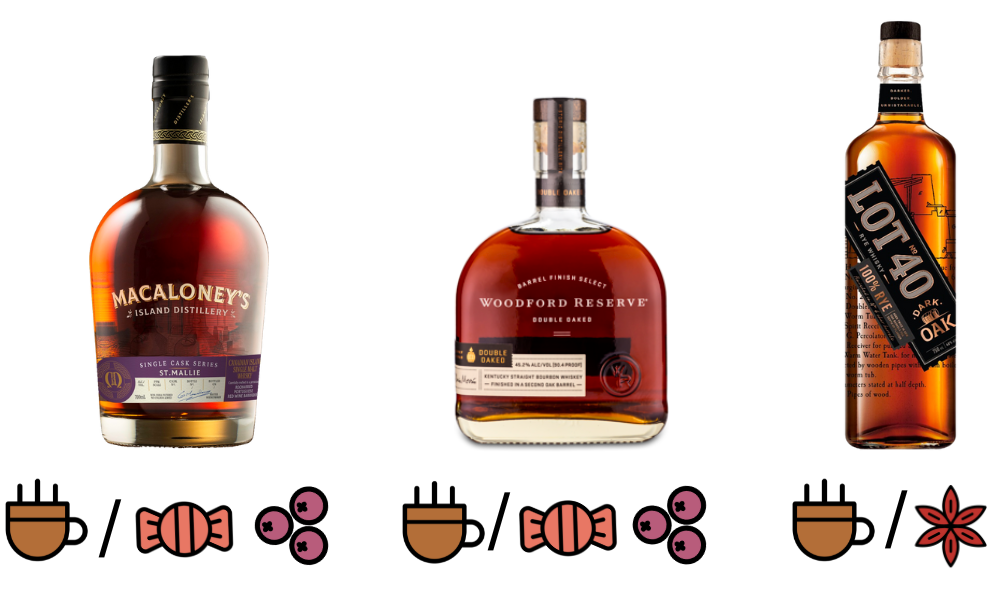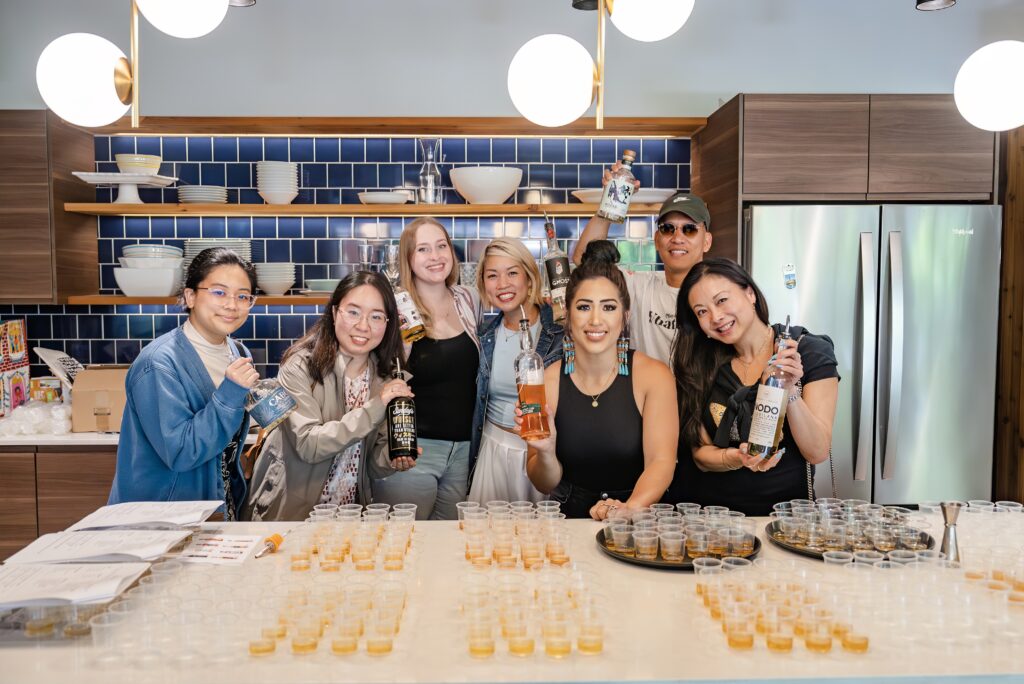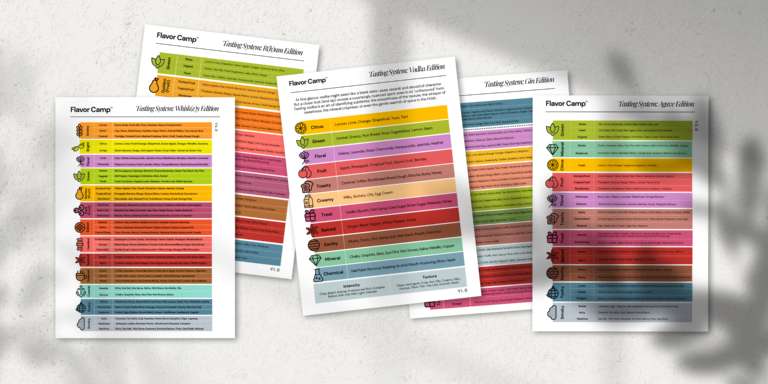Welcome to Flavor Camp™
Flavor Camp™ is more than just a brand—it’s an immersive journey into the world of flavors, designed to inspire curiosity, connection, and cultural discovery. Rooted in the belief that flavor is a universal language, Flavor Camp brings people together through the shared experience of tasting and storytelling.
Whether you’re sipping on whisky, crafting cocktails, or diving into the nuanced art of spirits appreciation, Flavor Camp offers tools, experiences, and insights that elevate your palate and ignite your sense of wonder. From educational tasting games to limited-release bottle collaborations, every touchpoint is crafted with creativity and a deep respect for the traditions and innovations of flavour-making.
At Flavor Camp, we don’t just taste—we explore, celebrate, and create unforgettable moments. Let’s drink better, together.


The Flavor Camp Methodology: Learning by Tasting, Guided by Design
At Flavor Camp, we specialize in spirits education, cocktail ideation, and food pairings, creating opportunities to explore the art and science of flavour in engaging, interactive ways. Our unique methodology combines competitions, challenges, and knowledge testing in both digital and in-person formats, ensuring a dynamic and immersive learning experience.
Why It Works
Challenges and competitions are at the heart of our approach because they make learning active, fun, and memorable. By encouraging spirits enthusiasts to apply knowledge in real-time, we help them sharpen critical thinking, deepen sensory skills, and foster creativity. Whether through in-person blind tasting masterclasses, digital cocktail challenges, or opinions-based surveys, our methodology sparks curiosity, encourages collaboration, and transforms education into an exciting, hands-on journey.
Through this blend of competitive energy, structured learning, and real-world application, Flavor Camp offers a fresh and effective way to connect with the world of flavor.
Want a digital copy of our latest Flavor Camp Tasting System Cards? Join our Flavor Camp Club and we’ll send you a set (it’s completely free)!
Why Flavor > Category When It Comes to Spirits
Most imbibers — even the dedicated ones — are taught to navigate the world of spirits by region, distillery, or category (for example: Scotch, bourbon, Canadian whisky etc.). And while those labels are helpful for understanding where a whiskey comes from or how it’s made, they tell you almost nothing about the most important thing:
👉 What does it taste like?
You can buy a single malt and expect it to be smoky… and get soft floral honey instead. You can buy a rum and expect it to be sweet… and get dry wood spice and black tea. Category, age, and origin are only half the story. Flavor is the thing you actually experience.
So why don’t we organize spirits by flavor in the first place?
The Case for Flavor-First Tasting
Grouping spirits by flavor profile — not by where they’re from or how they’re made — is more intuitive, more inclusive, and more helpful for everyone from beginners to experts. Here’s why:
1. It matches how people drink
When you reach for a whiskey, you’re looking for a certain feeling — something bright and citrusy, something rich and fruity, something smoky and brooding. You’re not thinking “I need a Lowland.” You’re thinking “I want something easygoing” or “I want something bold.” Flavor-based groupings actually align with how we drink and choose.
2. It helps people find what they like (faster)
When whiskies are organized by flavor, it’s easier to compare across types and regions. If someone loves “Dark Fruit” whiskies, they might discover a sherried Irish whiskey one week and a Pedro Ximénez-finished Highland Scotch the next. Suddenly, they’re not just brand loyal — they’re flavor fluent.
3. It makes exploration less intimidating
The whiskey world can be overwhelming. There are hundreds of brands, dozens of categories, and a sea of technical jargon. Flavor Camps strip all that back and say: Here’s what it tastes like. Want to try more like it? Start here. It lowers the barrier and raises the joy.
4. It tells you what production terms can’t
“Single malt” could mean peated or unpeated. “Irish” could mean light and floral or spicy and dense. “Bourbon” could be vanilla-smooth or wood-tannin dry. But if we say it’s in the Roasted camp, or the Golden Fruit camp, or the Spiced camp — now you know what you’re getting.
Categories explain the how.
Flavor explains the what.
And at the end of the day, you drink the what.
We’re focused on flavor fluency and training your palate, not your ego.
Sensory Training with the Flavor Camp™ Tasting System
Based on our structured, multi-sensory learning methodology we have developed a series of Flavor Camp™ Tasting Systems that uses multiple learning cues to help tasters retain & recall the full profiles of spirits. The combination of grouping information together in flavor camps, use of visual icons, color codes and taste association solidify the information in your brain more effectively.
How it Works
Determine the whisk(e)y’s tasting notes & organize by their corresponding flavor camps. If you’re new to tasting, review the brand’s recommended tasting notes & identify which flavor camps they fall into.

Based on the overall frequency & intensity of flavors within each camp, assign one primary and one to three secondary flavor camps for the spirit. This is now their flavor camp profile.

Use this profile to discover & enjoy other whiskies with similar flavor camps as well as contrasting flavor camps.
The entire intention is to be able to taste and relate spirits that aren’t necessarily from the same country, same category or style. For example here, we have Macaloney Island Distillery St. Maille which is a single malt from BC, Canada. Based on its flavor camps, similar profiles include Woodford Reserve Double Oak (a bourbon from Kentucky, USA), and Lot No. 40 Dark Oak (a rye whisky from Ontario, Canada).

Benefits
Develop Your Taste Identification
For newer drinkers, this system simplifies complicated tasting notes so you can focus on the main flavors. Over time (and with more practice) they will become easier to recall and identify.
Grow Expertise in Buying Bottles & Making Recommendations
Understanding how each product relates to each other based on their flavor profile allows you to look for things within the same flavor camps & make thoughtful recommendations to others.
Master The Art of Blind Tasting
Once you understand what processes create each individual flavor & can identify the flavors blind, you can use these skills to anticipate what you’re tasting blind and/or assess the overall quality of the spirit with ease.





